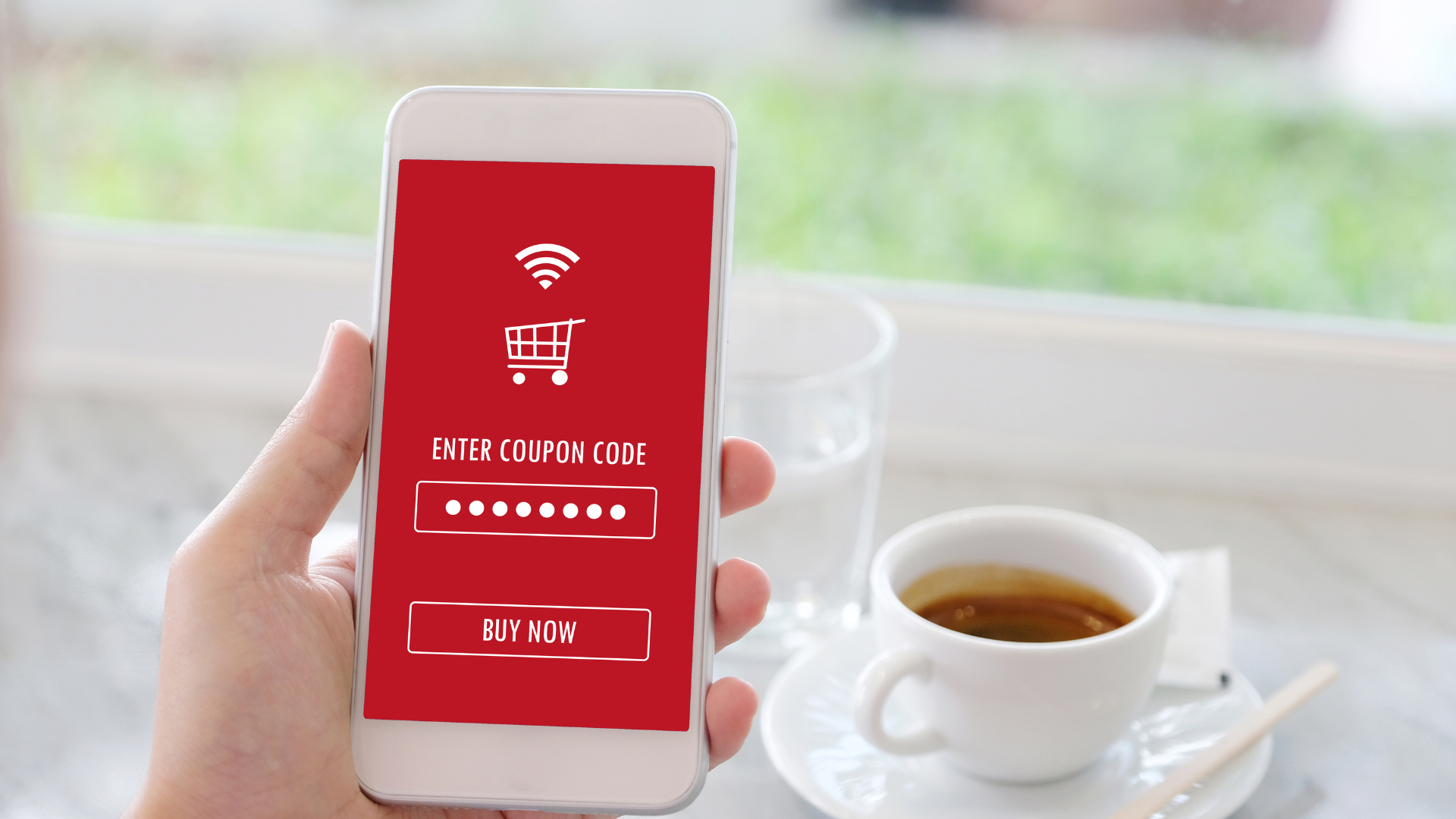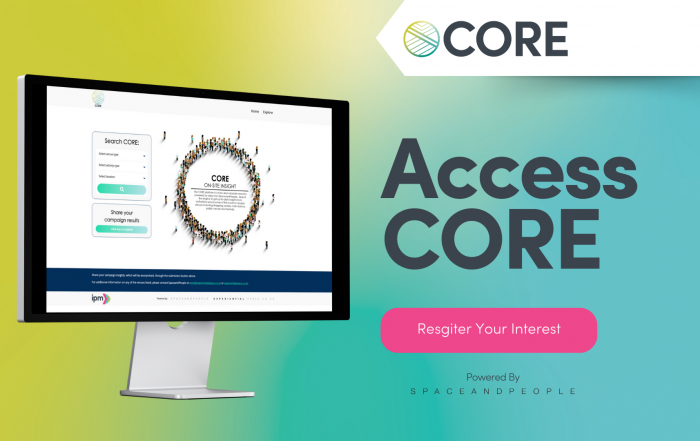
Elevating Your Brand with the Power of Promotions in the Marketing Mix
With the festive period underway and key sales periods such as Black Friday and Cyber Monday. The IPM takes a look at the important role of promotions within the marketing mix.

Elevating Your Brand with the Power of Promotions in the Marketing Mix
With the festive period underway and key sales periods such as Black Friday and Cyber Monday. The IPM takes a look at the important role of promotions within the marketing mix.
22nd November 2023
Introduction to the Modern Marketing Mix
The four Ps of marketing—Product, Price, Place, Promotion—theorised by Neil Borden in the 1950s, have long served as the pillars of marketing theory. These elements are essential in crafting a marketing strategies that effectively bring a product or service to market. However, in today’s fast-paced, technology-driven world, marked by constant noise and innovation, one might begin to question the relevance of these traditional concepts. Promotional strategies in particular have evolved, moving beyond established methods to embrace more personalised, immersive techniques like influencer collaborations, obscure brand partnerships, augmented reality and experiential marketing. This evolution reflects a broader trend in marketing: a shift from a transactional focus to a relational, consumer-centric approach. Products now include digital services evolving with consumer feedback, dynamic pricing models incorporating real-time data, and the concept of place has expanded beyond physical locations to encompass digital marketplaces and global accessibility. Yet in this changing landscape, the core principles of the four Ps remain integral to any marketing strategy, but their success lies in how they are tailored to fit the contemporary market environment.
Deep Dive into the Marketing Mix
Product or Service: Central to the marketing mix are the products or services offered by a company. Development, branding, and quality considerations are paramount in ensuring a compelling market presence. In today’s world, this can also include digital goods and services with a focus on customisable offerings and continuous improvements based on user feedback.
Price: Setting the right price is critical. It involves considerations such as cost, competition, and perceived value by the target audience, impacting the overall success of the product or service. Price strategy is more dynamic than ever, incorporating algorithms that respond in real-time to market demands and consumer behaviour. Subscription and freemium models are also becoming increasingly popular, especially in digital products.
Place: Distribution channels and product accessibility are vital components of the marketing mix. Ensuring the right presence in the market guarantees accessibility to the target audience. Place traditionally refers to the physical location where a product was sold, like stores or distribution points, but in the wake of the digital revolution, this definition has since expanded to include E-commerce, online marketplaces, and digital distribution channels with global accessibility.
Promotion: The linchpin of the marketing mix, promotions encompass a variety of strategies such as advertising, public relations, personal selling, and sales promotions. This element plays a dynamic role in communicating the value of products or services to the target audience. With the rise of influencer partnerships, targeted online advertising, data analytics and experiential marketing, the promotional landscape is rapidly embracing some of the most innovative, personalised, and interactive ways to engage with consumers.
The Power of Promotions
Promotions offer a flexible and powerful tool for companies to adapt and respond to market challenges, like the current cost of living crisis. They can ease financial burdens through special deals, channel consumer behaviour with incentives, and leverage the power of influencers for brand differentiation.
“Over the years as technologies have evolved, so has the concept of promotional marketing. As well as the traditional methods of sales promotions, incentives and competitions, new methods of promotion are taking centre stage brining to light methods such as experiential marketing and influencer promotion. With so many methods of delivery at our fingertips, it has never been a more exciting and creative time to be working in the marketing industry.”
Emma Kirk, General Manager, The IPM.
Increasing Brand Awareness
Effective promotional strategies are instrumental in creating and elevating brand awareness. Beyond just introducing a product or service to the market, the focus is on cutting though the noise and resonating with the target audience, be it through a time sensitive digital discount, immersive experiential pop up, or carefully composed loyalty programme. These tactics not only capture the audience’s attention but also encourage engagement and sharing. The strength of promotional marketing in increasing brand awareness lies in its ability to adapt to various platforms and consumer preferences, ensuring that the brand’s message is not just seen but also felt, remembered and acted upon.
Boosting Sales
Promotional marketing excels in its ability to generate immediate sales results while also building a foundation for future growth. By employing targeted campaigns that cater to specific segments of the market, brands can create personalised experiences that drive consumer action. The strength of promotions in boosting sales lies in their flexibility to incorporate time-sensitive deals, exclusive offers, or loyalty incentives, which encourage immediate purchases. This approach not only capitalises on the consumer’s desire for value but also enhances their engagement with the brand, paving the way for long-term customer relationships.
Creating Brand Ambassadors
One of the most powerful qualities of promotional marketing is its ability to turn customers into champions. This is achieved through experiences that go beyond the transactional—offering free trials, loyalty rewards, or exclusive access to products or services. Such strategies create a sense of belonging and appreciation among customers, motivating them to share their positive experiences. The strength of this approach lies in its organic nature, harnessing the credibility of satisfied customers to amplify the brand’s reach through the most trusted form of marketing: word-of-mouth.
Adapting to Market Changes
Promotions provide a flexible tool for companies to respond to market changes. Like now, under the current cost of living crisis, promotions and offers can be instrumental in helping consumers through tough periods. Similarly, in response to emerging consumer trends, brands can quickly pivot their promotional strategies to align with these new preferences, ensuring they remain at the forefront of the market. This agility in promotional marketing is not just about reacting to changes but proactively shaping brand strategies to stay ahead of the curve, demonstrating a keen understanding of the market and the needs of the consumer.
Embracing the Evolution of Promotions
In this transformative era of marketing, as we revisit the foundational pillars of the marketing mix—Product, Price, Place, and Promotion—it’s evident that the realm of Promotions has undergone the most dynamic evolution. By embracing new technologies and ethical practices, and committing to social responsibility, brands are not only adhering to these traditional marketing principles but are also innovatively redefining them. This approach is crucial in setting new standards for customer engagement and shaping the future of marketing. As we reflect on the journey from traditional promotional strategies to today’s era of digital, experiential, and influencer marketing, it becomes clear that the readiness to embrace change, coupled with a pursuit of continuous learning, is essential. These elements are not just complementary to the marketing mix but are central to its effective application in the contemporary market landscape. In doing so, brands not only ensure their relevance and competitiveness but also play a pivotal role in driving the industry forward.
News
Agencies Hail CORE A Game-Changer for Experiential Insights
Agencies Hail CORE A Game-Changer for Experiential Insights. Secure 1 weeks access for non-IPM members.
Beyond the Rainbow: Growing Your Brand with Pride
Discover how brands can genuinely support the LGBTQIA+ community at Pride 2024.
Plunge into a Summer Review of ASA Promotion Rulings 2024
Dive into our Summer Review of ASA Promotion Rulings 2024.
22nd November 2023
Introduction to the Modern Marketing Mix
The four Ps of marketing—Product, Price, Place, Promotion—theorised by Neil Borden in the 1950s, have long served as the pillars of marketing theory. These elements are essential in crafting a marketing strategies that effectively bring a product or service to market. However, in today’s fast-paced, technology-driven world, marked by constant noise and innovation, one might begin to question the relevance of these traditional concepts. Promotional strategies in particular have evolved, moving beyond established methods to embrace more personalised, immersive techniques like influencer collaborations, obscure brand partnerships, augmented reality and experiential marketing. This evolution reflects a broader trend in marketing: a shift from a transactional focus to a relational, consumer-centric approach. Products now include digital services evolving with consumer feedback, dynamic pricing models incorporating real-time data, and the concept of place has expanded beyond physical locations to encompass digital marketplaces and global accessibility. Yet in this changing landscape, the core principles of the four Ps remain integral to any marketing strategy, but their success lies in how they are tailored to fit the contemporary market environment.
Deep Dive into the Marketing Mix
Product or Service: Central to the marketing mix are the products or services offered by a company. Development, branding, and quality considerations are paramount in ensuring a compelling market presence. In today’s world, this can also include digital goods and services with a focus on customisable offerings and continuous improvements based on user feedback.
Price: Setting the right price is critical. It involves considerations such as cost, competition, and perceived value by the target audience, impacting the overall success of the product or service. Price strategy is more dynamic than ever, incorporating algorithms that respond in real-time to market demands and consumer behaviour. Subscription and freemium models are also becoming increasingly popular, especially in digital products.
Place: Distribution channels and product accessibility are vital components of the marketing mix. Ensuring the right presence in the market guarantees accessibility to the target audience. Place traditionally refers to the physical location where a product was sold, like stores or distribution points, but in the wake of the digital revolution, this definition has since expanded to include E-commerce, online marketplaces, and digital distribution channels with global accessibility.
Promotion: The linchpin of the marketing mix, promotions encompass a variety of strategies such as advertising, public relations, personal selling, and sales promotions. This element plays a dynamic role in communicating the value of products or services to the target audience. With the rise of influencer partnerships, targeted online advertising, data analytics and experiential marketing, the promotional landscape is rapidly embracing some of the most innovative, personalised, and interactive ways to engage with consumers.
The Power of Promotions
Promotions offer a flexible and powerful tool for companies to adapt and respond to market challenges, like the current cost of living crisis. They can ease financial burdens through special deals, channel consumer behaviour with incentives, and leverage the power of influencers for brand differentiation.
“Over the years as technologies have evolved, so has the concept of promotional marketing. As well as the traditional methods of sales promotions, incentives and competitions, new methods of promotion are taking centre stage brining to light methods such as experiential marketing and influencer promotion. With so many methods of delivery at our fingertips, it has never been a more exciting and creative time to be working in the marketing industry.”
Emma Kirk, General Manager, The IPM.
Increasing Brand Awareness
Effective promotional strategies are instrumental in creating and elevating brand awareness. Beyond just introducing a product or service to the market, the focus is on cutting though the noise and resonating with the target audience, be it through a time sensitive digital discount, immersive experiential pop up, or carefully composed loyalty programme. These tactics not only capture the audience’s attention but also encourage engagement and sharing. The strength of promotional marketing in increasing brand awareness lies in its ability to adapt to various platforms and consumer preferences, ensuring that the brand’s message is not just seen but also felt, remembered and acted upon.
Boosting Sales
Promotional marketing excels in its ability to generate immediate sales results while also building a foundation for future growth. By employing targeted campaigns that cater to specific segments of the market, brands can create personalised experiences that drive consumer action. The strength of promotions in boosting sales lies in their flexibility to incorporate time-sensitive deals, exclusive offers, or loyalty incentives, which encourage immediate purchases. This approach not only capitalises on the consumer’s desire for value but also enhances their engagement with the brand, paving the way for long-term customer relationships.
Creating Brand Ambassadors
One of the most powerful qualities of promotional marketing is its ability to turn customers into champions. This is achieved through experiences that go beyond the transactional—offering free trials, loyalty rewards, or exclusive access to products or services. Such strategies create a sense of belonging and appreciation among customers, motivating them to share their positive experiences. The strength of this approach lies in its organic nature, harnessing the credibility of satisfied customers to amplify the brand’s reach through the most trusted form of marketing: word-of-mouth.
Adapting to Market Changes
Promotions provide a flexible tool for companies to respond to market changes. Like now, under the current cost of living crisis, promotions and offers can be instrumental in helping consumers through tough periods. Similarly, in response to emerging consumer trends, brands can quickly pivot their promotional strategies to align with these new preferences, ensuring they remain at the forefront of the market. This agility in promotional marketing is not just about reacting to changes but proactively shaping brand strategies to stay ahead of the curve, demonstrating a keen understanding of the market and the needs of the consumer.
Embracing the Evolution of Promotions
In this transformative era of marketing, as we revisit the foundational pillars of the marketing mix—Product, Price, Place, and Promotion—it’s evident that the realm of Promotions has undergone the most dynamic evolution. By embracing new technologies and ethical practices, and committing to social responsibility, brands are not only adhering to these traditional marketing principles but are also innovatively redefining them. This approach is crucial in setting new standards for customer engagement and shaping the future of marketing. As we reflect on the journey from traditional promotional strategies to today’s era of digital, experiential, and influencer marketing, it becomes clear that the readiness to embrace change, coupled with a pursuit of continuous learning, is essential. These elements are not just complementary to the marketing mix but are central to its effective application in the contemporary market landscape. In doing so, brands not only ensure their relevance and competitiveness but also play a pivotal role in driving the industry forward.
News
Agencies Hail CORE A Game-Changer for Experiential Insights
Agencies Hail CORE A Game-Changer for Experiential Insights. Secure 1 weeks access for non-IPM members.
Beyond the Rainbow: Growing Your Brand with Pride
Discover how brands can genuinely support the LGBTQIA+ community at Pride 2024.
Plunge into a Summer Review of ASA Promotion Rulings 2024
Dive into our Summer Review of ASA Promotion Rulings 2024.









